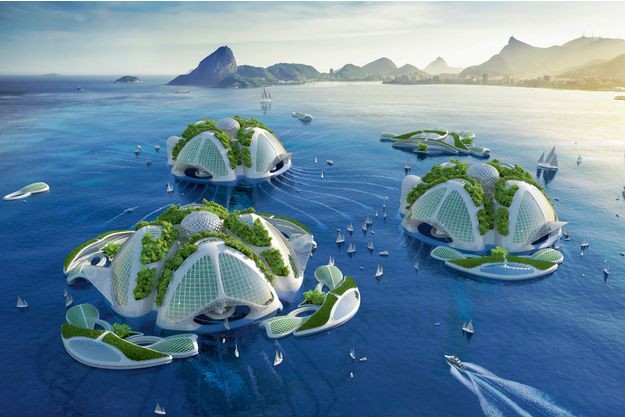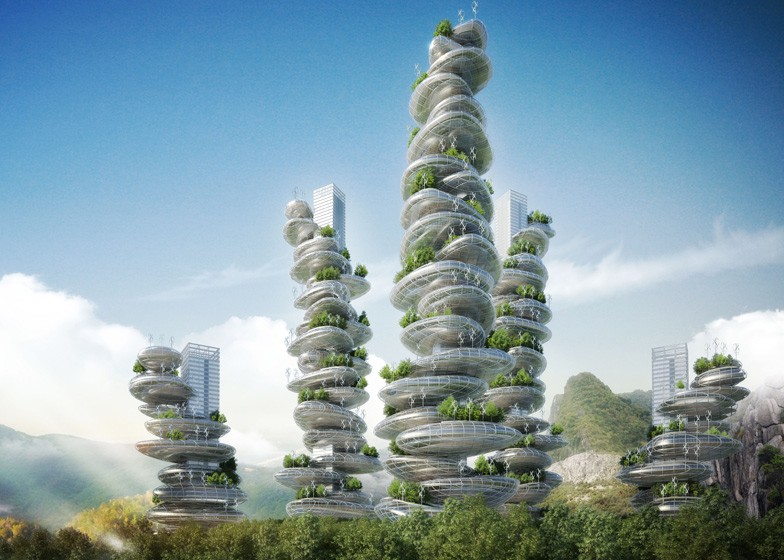“Be Realistic, Demand the Impossible!” was the motto of the general strike and student protests of May 1968 in Paris. The first anti-consumerist punks were born around that time, and arguably the movement sparked the first ideas for Solarpunk.
Today in 2068, I can’t help but think that the protesters of 1968 were the pathfinders for my generation’s salvation on this planet. Years after the 1968 protests, my forefathers — Solarpunks — imagined the impossible and saved humanity.
Before Solarpunk
In 1968 workers had to roar in outrage, go out onto the streets, and demand higher wages for jobs that would eventually cause the biggest ecological crisis experienced in history. Back then, people didn’t know the future consequences of the massive production of consumer goods and subsequent extreme consumerism.
People were happy about “economic booms” because that meant they could consume more. Little did they know, economic boom translated into ecological doom.
And when they did realize, somewhere in the 2000s, how capitalism erodes all that is living, it was almost too late. The capitalist state still tried to promote “green growth” for another 30 years; greedy capitalism tried to wear an ecological face.
The early Solarpunks
The early Solarpunks lived in polluted, unsustainable, consumption-driven cities. They always laid low on the political and environmental radar. Instead, they created solar oases in their homes and nurtured a budding Solarpunk lifestyle for future generations.
They formed communities through the social network Scuttlebutt, where they exchanged ideas on ways to live a Solarpunk life. This social media platform was “alternative” back then because it was decentralized, private, and encrypted. My parents learned about the Solarpunk lifestyle there.
Despite having small living spaces, early Solarpunks housed many plants in their homes. They cultivated gardens indoors and started micro-farms outdoors. They also boycotted straws, plastic tubes used to slurp drinks, and converted their plastic waste with a 3D printer. Back in 2018, this was not the norm; society believed that such a lifestyle was too time-consuming.

The 2030 crisis
My parents witnessed humanity hit rock bottom around 2030. The plastic crisis was out of control, and ocean trash had accumulated to areas larger than continents. Every minute, one garbage truck worth of trash was dumped into the oceans. People evacuated numerous cities because they ran out of water. It looked like humankind had dug itself into a grave, too deep to survive.
The air was extremely toxic to breathe, it was called “smog.” And there wasn’t only pollution in the air, there also was despair. All of a sudden, hope for the future disappeared, a dystopian reality seemed imminent.
Once the capitalist state finally understood that the thirst for economic growth had doomed humanity, it resigned. The system that reigned for 150 years had nothing more to offer.
People were waiting for a coup d'état; religious people feared Armageddon. But what society didn’t know was that since 2008, bands of Solarpunks were gradually emerging. They were imagining and working on a future where humans could live in harmony with the planet again. Despite the dissolving system around them, they were optimistic about the future.

Enter Solarpunk era
When capitalism dissolved, Solarpunks didn’t plan a secret operation to seize power and change the world in one day. They led humanity by example; there was no one leader. Solarpunks were in all societies, all over the world and their lifestyle became extremely pertinent at a time of chaos. From the bottom up, societies converted to Solarpunk lives without coercion. You either solared-up or didn’t exist at all, collective action was imperative.
From the beginning, Solarpunks weren’t afraid to imagine a new reality. A reality in which humans don’t leach off the planet but live harmoniously with all species. They injected the world with “a fresh dose of techno-ecological utopianism.” They saw opportunities rather than a set of all-consuming problems. These “anarchists” steered humanity towards solar salvation.

The planet became entirely powered by renewable energy.
Plastic continents were converted to biomimetic architecture, which uses advanced renewable energy sources to create structures that were self-sufficient. Since all buildings and homes were self-sufficient, energy became completely decentralized. After all, (non-renewable) energy was the reason for many wars and clashes in history. The planet experienced terrible oil spills and fracking, oh it was all too awful to describe...
Thanks to Solarpunk technology, all infrastructure is capable of producing and storing its own energy from the sun or the wind.
All these societal and technological changes helped convert urban cities into urban jungles, where the air was no longer toxic. Worldwide health improved because of purer air, fewer toxins in food, and thickened ozone. A newfound respect for nature and technology emerged.
These elements are always in balance now: nature and progress. Keeping this balance is vital; the way to do so is to control the human desire to be the superior species by guiding people to live an egalitarian life in harmony with others.
I am the first generation to be born into a Solarpunk society; what I, we, must remember is that the extraordinary power humans have on this planet, come with extraordinary responsibilities — never forget 2030.




